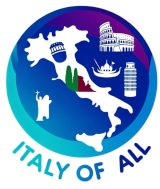The province of Novara, located in the Piedmont region of northern Italy, is known for its rich agricultural landscape, historical heritage, and economic significance, particularly in rice production. Nestled between the Sesia River and the Ticino River, which form its western and eastern boundaries, Novara offers a mix of scenic rural areas and industrious urban centers.
Geographically, Novara is characterized by its flat, fertile plains that form part of the larger Po Valley, one of Italy’s most important agricultural areas. The province is particularly renowned for its extensive rice paddies, which contribute significantly to Italy’s status as one of Europe’s largest rice producers. The landscape also features several natural parks and reserves, providing habitats for diverse flora and fauna and opportunities for nature-related activities.
Historically, Novara has a rich past that dates back to Roman times, though it gained prominence in the medieval period. Throughout history, it has been a site of numerous battles due to its strategic location near the Alps and the major cities of Milan and Turin. The city of Novara, the capital of the province, is home to several notable architectural landmarks, including the Basilica of San Gaudenzio, famed for its dome designed by Alessandro Antonelli, and the Broletto, an historic medieval building that now serves as a cultural venue.
Culturally, Novara embraces its heritage through various festivals, museums, and culinary events that highlight both its historical significance and contemporary vibrancy. The province is also known for its strong educational institutions and cultural centers, which promote the arts, music, and literature, contributing to a rich cultural life.
Cuisine in Novara is influenced by both Piedmontese and Lombard traditions, reflecting its geographical position at the crossroads of these two regions. Local specialties include “risotto alla Novarese,” made with local rice and sausages; “paniscia,” a hearty risotto-like dish with beans and salami; and “gorgonzola cheese,” from the nearby town of the same name. The province is also noted for its wines, particularly those from the hills of Novara, which produce excellent Nebbiolo and other varietals.
Economically, Novara’s economy is largely driven by agriculture, with a focus on rice cultivation. Additionally, the province has developed a robust industrial sector, with strengths in manufacturing, textiles, and chemicals. Its proximity to Milan and Turin makes it a strategic location for businesses and logistics, facilitating trade and economic growth.
Despite challenges such as balancing industrial growth with environmental sustainability and supporting the rural economy, Novara is actively engaged in promoting sustainable agricultural practices and enhancing its cultural and natural heritage to boost tourism and local development.
Overall, the province of Novara offers a compelling mix of agricultural wealth, historical depth, and cultural vitality. Its ongoing efforts to foster sustainable development while preserving its unique heritage ensure its continued significance within Italy’s Piedmont region.
Comuni in Novara Province:
- Bogogno
- Agrate Conturbia
- Borgo Ticino
- Borgolavezzaro
- Bolzano Novarese
- Arona
- Borgomanero
- Biandrate
- Armeno
- Boca, Novara
- Bellinzago Novarese
- Barengo
- Ameno
- Cavaglio d’Agogna
- Cavallirio
- Carpignano Sesia
- Caltignaga
- Briga Novarese
- Casalbeltrame
- Cameri
- Briona
- Castelletto sopra Ticino
- Castellazzo Novarese
- Casaleggio Novara
- Cavaglietto
- Casalvolone
- Divignano
- Dormelletto
- Cerano
- Cressa, Piedmont
- Comignago
- Fara Novarese
- Cureggio
- Ghemme
- Landiona
- Mandello Vitta
- Meina
- Gattico-Veruno
- Marano Ticino
- Grignasco
- Granozzo con Monticello
- Invorio
- Galliate
- Gudo Visconti
- Massino Visconti
- Ghislarengo
- ** Gargallo
- Gozzano
- Oleggio Castello
- Pella
- Nibbiola
- Mezzomerico
- Oleggio
- Orta San Giulio
- Miasino
- Novara
- Momo
- Romentino
- Prato Sesia
- Romagnano Sesia
- Pettenasco
- Pombia
- Recetto
- Pogno
- Sozzago
- San Pietro Mosezzo
- San Maurizio d’Opaglio
- Soriso
- Sizzano
- Terdobbiate
- Vicolungo
- Vinzaglio
- Vaprio d’Agogna
- Vespolate
- Trecate
- Villa Verde
- Varallo Pombia
